| |
|
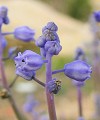 | |
| MaltaWildPlants.com by Stephen Mifsud |

|
| |
|
|
 |  |  |  |
| External Links: |
|
Convolvulus arvensis (Field BindWeed) |

Convolvulus arvensis (CONVOLVULACEAE.)
Images for this profile are taken from the Maltese Islands after year 2000. |
|
| Nomenclature |
Species name : | Convolvulus arvensis L. | Authority : | Carl von Linne, Sweden, (1707 - 1778) | Synonyms :
(basionym or principal syn.) |
|
Plant Family : | | English name(s) : | Field BindWeed, Lesser bindweed, Morning Glory Flower | Maltese name(s) : | Leblieb tar-raba | Status for Malta : | Indigenous. Present on the Maltese islands before man | Name Derivation : |
Convolvulus: from the Latin word convolvere, meaning to twine around, referring to the twining habit of the stem of most plants in this genus. (Latin origin )
arvensis: meaning fields or cultivated land, with reference to the preferred habitat of this plant. (Latin origin )
| Remarks : | |
|
| Morphology and structure |
PLANT STRUCTURE: |
Character | Growth Form | Branching | Surface |
Description | & Prostrate | | |
General
Picture |  |  |  |
|
LEAVES: |
Character | Arrangement | Attachment | Venation |
Description | | | |
General
Picture | 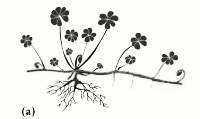 | 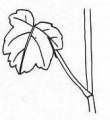 |  |
| |
Character | Leaf Shape | Leaf Margin | Remarks |
Description | | | |
General
Picture |  |  |  |
|
FLOWERS: |
Character | Colour | Basic Flower Type | No. of Petals | No. of Sepals |
Description | Pink, Light pink, or White Flowers are usually pink with white stripes (star shaped), but the inverted form are also possible. | | 5 (Fused together). | 5 |
General
Picture | |  |  |  |
| |
Character | Inflorescence | Description | Ovary | Stamens |
Description | | Flower consists of 5 small overlapping sepals and a large flower with its 5 petals entirely fused to form a trumpet shaped flower. It has white colour with radial stripes of pink (often star shaped) and a yellowish centre from which the 5 stamens and central pistil with 2-parted stigma comes out. | | |
General
Picture |  |  | 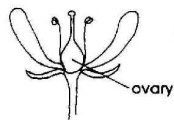 | 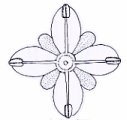 |
| |
Character | Scent | Average Flower Size | Pollen Colour | Other Notes |
Description | YES Possess a noticeable sweet vanilla-like scent. | 20-30mm | White | - |
|
SEEDS: |
Character | No. Per Fruit | Shape | Size | Colour |
Description | 1-4 (maximum 4 per fruit). | Quarter-Sphere Oval or 3-angled with 2 sides flattened and one rounded. | 4-5mm | Dark Brown |
General
Picture |  |  |  |  |
|
FRUIT AND OTHER BOTANICAL DATA: |
Character | Fruit Type | Colour of Fruit | Subterranean Parts | Other Notes |
Description | | Green Turns yellow/beige when ripe. | | - |
General
Picture | 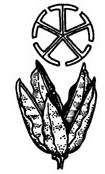 |  | 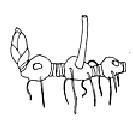 |  |
|
|
| Plant description and characters | |
Life Cycle: | Perennial. |
Growth Form: | GEOPHYTE (bearing underground bulbs, rhizomes, stolons, etc.) |
Habitat: | Fallow fields, Cultivated land after harvesting, grassy waysides and arable land. Likes a porous, loamy soil rich in nitrogen content. |
Frequency: | Very Common |
Localities in Malta: | Very Common in fallow fields and arable land in summer throughout the Maltese Islands. |
Plant Height: | Plant with a trailing stem extending to a length of 200cm. |
| May-Sep |
Protection in Malta: | Not legally protected till the last update of this website (2/Mar/2022) |
Red List 1989: | Not listed in the Red Data Book of the Maltese Islands |
Poison: | |
This plant is considered as a perennial due its root-like rhizomes which remain alive deep into the soil. It is a common plant of waste ground and fallow fields where its branched stems are either found twining (anti-clockwise) around other plants, or crawls over the ground. The stems are more or less hairless.
The leaves are stalked, up to 40mm long and alternatively arranged along one side of the stem. Their shape is moderately variable, but generally they have a sagittate or hastate shape, with distinct arrow-like base. Variation is demonstrated in the breadth of the lamina, some specimen have slender leaves, others obtuse. Venation pinnate, and although they generally have a smooth outline, some show a slightly wavy margin.
The flowers have five free, overlapping sepals, five fused petals, five separate stamens and one central pistil. The corolla is funnel-shaped which vary considerably in colour - in one extreme they are white, whilst in the other extreme, they can be almost magenta. Generally the colour is pale pink to pink and looks to have a painted central, white, 5-armed star. There are 5 stamens fused at the base of the corolla and are white with lilac anthers. Pollen is white. The pistil is made up of two carpels enclosed in a superior, compound ovary. Pollination is frequently by bees, wasps or butterflies/moths.
Its fruit is rather spherical to sub-spherical in shape and attains a maroon colour when getting ripe. When dry, the capsule open along its horizontal circumference (circumscissile dehiscence). It can hold a maximum of 4 dark brown seeds, but 2 or 3 seeds per capsule is not infrequent. There is no obvious method of seed dispersion, they just drop down to ground. Soil ploughing definitely assists the spreading of seeds, as also does their carriage by insects. The seeds are 5 to 6mm long with a rather oval or 3 angled shape where 2 sides are depressed flat ad the third is convex (up-rounded).
|
|
| Information, uses and other details |
Stem Growth and function:
The tip of the stem goes undergoes considerable growth movements and in about 2 hours completes a full clockwise rotation (when looked down on the plant), which is several cms in diameter. [274] The stem function is to grip with neighbouring erect plants or structures and so climb up to get better sunlight and exposure of its flowers [SM] . Doing so, the tight twining may kill the neighbouring 'host' plants. [275]
The Bud:
In the bud the petals are folded into five pleats, the outermost part of the fold being these deep pink rays. At the bottom of the flower are what appear to be the mouths of five tubes, or pipes, running downwards, the tubes being formed by the flattened filaments of the stamens being joined to the corolla tube and yet projecting ridge-like into the flower. Flowers with tubes like these are known as 'revolver flowers,' because of the resemblance to the barrels of a revolver: the Gentians are another example. [WWW-03]
Pollination:
These tubes lead to the nectar which is contained in five small sacs, one at the base of each tube. To get to the honey an insect has to thrust its proboscis down each tube in turn, but whilst doing so, he knocks against the pollen in the anther placed just above it, and by carrying that pollen to the next flower it effects its cross-fertilisation. [WWW-03]
In spite of this arrangement, it is a strange and unexplained fact that the flowers seldom set seeds, though the open corollas are visited by many insects, attracted by the nectar and by the faint perfume of vanilla that characterises it. The failure to set seed is, however, quite compensated for by the vitality of its widely spreading, much branched roots, on which it chiefly depends for its propagation. [WWW-03]
Cultivation Notes:
Prefers a lighter basic soil [17] of low to medium fertility [200] . Bindweed is a very deep-rooting plant with a vigourous root system that extends to a considerable distance and is very hard to eradicate from the soil. Even a small piece of the root will grow into a new plant if it is left in the ground. Once established this plant soon becomes a pernicious weed [1,4] . It is a climbing plant that supports itself by twining around any support it can find and can soon swamp and strangle other plants. The flowers close at night and also during rainy weather. Although visited by numerous insects, the flowers seldom set fertile seed [4] . On sunny days the flowers diffuse a scent and turns towards the sun (heliotrope) [245] . The plant harbours tobacco mosaic virus of the Solanaceae [13] and so should not be grown near potatoes, tomatoes and other members of that family.
Garden or field pest:
This species can become a real pest in the garden so it is unwise to encourage it. Its roots run very deeply into the ground and extend over a large area. It is, therefore, extremely difficult to extirpate, for the long roots are brittle and readily snap, and any portion left in the ground will soon grow as vigorously as ever and send up shoots to the surface, so that in a very brief time it is again spreading over the ground and climbing over everything in its way. [WWW-03]
Medicinal Uses:
The root, and also a resin made from the root has the following medicinal properties [4, 7. 9. 13, 240]
| Cholagogue |
promotes the discharge of bile from the system. [WWW-32] |
| Diuretic |
increase the secretion and discharge of urine. [WWW-32] |
| Laxative |
Having the effect of loosening or opening the intestines, hence stimulating evacuation of faeces and so relieving from constipation. [WWW-32] |
| Strongly Purgative |
stimulates evacuation of the bowels. [WWW-32] |
The dried root contains 4.9% resin [240] . A tea made from the flowers is laxative and is also used in the treatment of fevers and wounds [222] . A cold tea made from the leaves is also laxative and is used as a wash for spider bites or taken internally to reduce excessive menstrual flow [222, 257] .
C. arvensis extracts show profound promise as anticancer agents:
A report by Nicholas Calvino, DC on chiroweb.com concludes that this plant is rich in extracts which have Anti-Angiogenesis properties. [WWW-44 ]. His conclusion says:
" In summary, convolvulus arvensis extracts show profound promise as anticancer agents, largely through the ability to inhibit angiogenesis, and the weed's stimulatory effect on the immune system. The exact details regarding its anti-angiogenesis mechanism are not completely understood, and should be studied further to elucidate its anti-tumor effects and mechanisms of action. "
His full article can be read by clicking here.
Uses:
A green dye is obtained from the whole plant [168]
The stem is used as a twine for tying up plants etc [6, 99] . It is fairly flexible and strong but not long-lasting. [WWW-02]
Edible Uses:
The plant has been used as a flavouring in a liqueur called 'Noyeau' [2] . No details are given as to which part of the plant is used. [KF]
Misc. notes:
- Its seeds retain their viability for over 40 years. [WWWW-04]
- Plant preferred propagation is by underground, deep, creeping rootstocks rather then by seeds. Even a small piece of the root will grow into a new plant if it is left in the ground [1, 4] .
- The roots of the bindweed can penetrate profusely to a depth of several meters in soil. This characteristic can prove useful in certain circumstances, since it helps to prevent the erosion of banks and dikes. [WWW-02]
- Native of the Mediterranean region. [273]
Personal observations:
Response of Flower to Light:
The flower has response to the daylight because it opens in the early morning, around few minutes after sunrise, and close on the same day before sunset. If the weather becomes cloudy and dull, the flowers will usually close. [SM]
Heat tolerance
It is quite amazing that a plant with many leaves and large flowers can survive the hottest and dry months of July and August in Malta. You can easily see bindweed flowers lying on completely dry fields and scorching sun at an average shade temperature of 32 Celsius (click here to see a photo of bindweed taken in August 2003) [SM]
Closely related species
There is another Convolvulus species, the C. lanuginosus which has the flower very similar to the Convolvulus arvensis. It has white flowers with pink underside stripes, identical to those of white-flower forms of the C. arvensis species. The key difference lies in their leaves. C. arvensis have arrow shaped leaves (their base is wider from body of leaf) while the leaves of C. lanuginosus have their base more narrow from the leaf body, hence a lanceolate shape [SM]
|
|
| Links & Further literature
(0 papers) |

Google Web |

Google Images |

Google Scholar |

Research Gate |

Wikipedia |

JSTOR |

GBIF |

Med Checklist |

Cat. of Life |

EoL |

IPNI |

World Flora Online |

Plants of the World Online |

Vienna Virt. Herb. |

RBGE Herbarium |

KEW Herbarium |

MNHN |

Arkive |

IUCN |

CABI |
Kindly Email if there are papers and publications about local
studies or information about this species to be included in the list above.
|
| Photo Gallery (33 Images) |  |
 |
 |
 |
IMAGE: CNVAV-01 Photo of a typical flower having a light pink colour with a central 5-striped star shape of a white colour. The intensity of the pink varies between different specimen. |
IMAGE: CNVAV-02 Photo of flower which has a trumpet or funnel shape. |
IMAGE: CNVAV-03 This photo shows a flower which has a fairly intense pink colour, and hence shows the central 'white star' with more contrast. |
IMAGE: CNVAV-04 Another photo of a flower which has a stong pink colour - not very common as the light-pink flower forms. The 'pinkness' varies between different flowers from strong pink (like in this photo) to pure white. |
 |
 |
 |
 |
IMAGE: CNVAV-05 Close up photo of central part of flower to show the 5 stamens (with lilac-violet anthers), central style with its 2-parted stigma, and a yellowish center. Red mites are common habitants of the flowers. |
IMAGE: CNVAV-06 Photo of a flower which lack the pink colour and hence appear all white. This flower form is quite common in Malta. |
IMAGE: CNVAV-07 Photo of the backside of a flower. Although the colour of the front part of the flower may vary, all flowers show these pink-purple (mauve) radiating stripes at their back side. This flower is entirely white when seen from its front. |
IMAGE: CNVAV-08 Scanned image of 2 typical flowers against a dark background. |
 |
 |
 |
 |
IMAGE: CNVAV-09 Scanned image of the reproductive organs of the flower, that is the 5 stamens, and a central pistil with inferior ovary, a white style and 2-parted linear-shaped white stigma. |
IMAGE: CNVAV-10 Scanned image of flower with petals removed to expose better the stamens and pistil. Each of the 5 stamens is made of a white filament with a lilac-violet anther having a white band of pollen. |
IMAGE: CNVAV-11 Underside photo of flower to show star shaped pink bands and the form of the calyx made by 5 overlapping equally shaped sepals. |
IMAGE: CNVAV-12 Sets of trumpet-shaped flowers close to each other, are often found to decorate many of the Maltese fallow fields in Summer.Photo taken on 3-Sep-06. |
 |
 |
 |
 |
IMAGE: CNVAV-13 Photo of lateral view of flower and several leaves of the plant. |
IMAGE: CNVAV-14 Photo of plant trailing along a fallow field. When there is no vertical supports, the stems trail on the ground until they find something upright to 'grip' to. The underside of the flower is also seen in this photo. |
IMAGE: CNVAV-15 Photo of a pink flower and an array of leaves, one after the other along a trailing stem of a plant found in a fallow/uncared field. |
IMAGE: CNVAV-16 Photo of a white flower-form plant in its habitat, hence trailing on a dry (pre-harvested) field during late Spring / Summer. |
 |
 |
 |
 |
IMAGE: CNVAV-17 Photo of plant with its stem twining around and climbing up along a stalk. |
IMAGE: CNVAV-18 Photo of a young plant. |
IMAGE: CNVAV-19 Photo of plant and several flowers lying in a field. |
IMAGE: CNVAV-20 Flowers lying on a dry field during August, the hottest and most arid month of the year. |
 |
 |
 |
 |
IMAGE: CNVAV-21 Illustration showing anatomy of several parts of plant. |
IMAGE: CNVAV-22 |
IMAGE: CNVAV-23 |
IMAGE: CNVAV-24 Photo of a branch twining along a fennel stalk. Twining is anti-clockwise. |
 |
 |
 |
 |
IMAGE: CNVAV-25 Photo of 3 leaves along a common stem. They have a sagittate shape. pinnate venation, a rather short petiole. Shape varies, some are wider and some more slender in shape. |
IMAGE: CNVAV-26 Photo of 2 leaves. Often, they have a slightly wavy outline like in this example. |
IMAGE: CNVAV-27 Photo of 2 mature fruit capsules. It is rounded (sub-spherical) with a pointed tip. When maturing it attains a purple-brown colour. |
IMAGE: CNVAV-28 Photo of a ripe fruit capsule. It dries and becomes light brown in colour. Normally, the upper part of the capsule becomes loose and open as a lid, and the 4 seeds inside fall off without any mechanical dispersion. However it was also noted that the whole 'closed' fruit drops to the ground and the seeds gets liberated later by the breaking down of the fruit wall by movement of the soil (eg with ploughing) or rain, or certain insects. |
 |
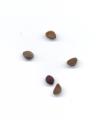 |
 |
 |
IMAGE: CNVAV-29 Scanned image of the the fruit capsules (including lng/trv. dissections) and 4 seeds, the maximum that a single capsule can store. |
IMAGE: CNVAV-30 Scanned image of the oval (lemon shaped) brown seeds. They might end up being attacked by some burrowing insects during their development. |
IMAGE: CNVAV-31 Scanned and magnified image of the dark brown seeds. The have a rough texture and measure about 5mm in length. |
IMAGE: CNVAV-32 Magnified image of pollen under light microscope. |
 |
| | | IMAGE: CNVAV-33 Convolvulus arvensis together with a garden escape of the same Convolvulaceae family - Ipomoea purpurea. |
IMAGE: CNVAV-34 |
IMAGE: CNVAV-35 |
IMAGE: CNVAV-36 |
|
| | |

